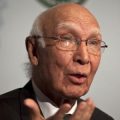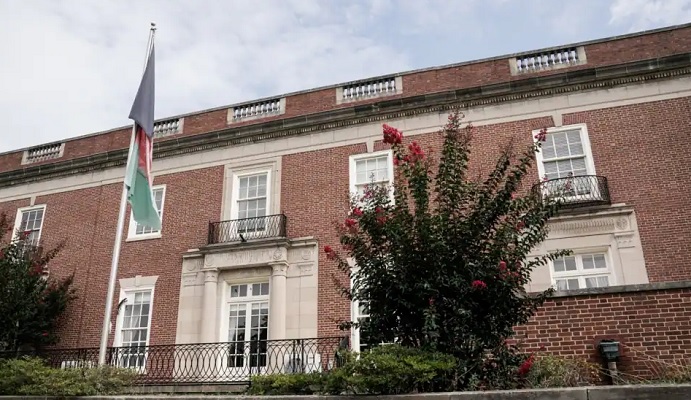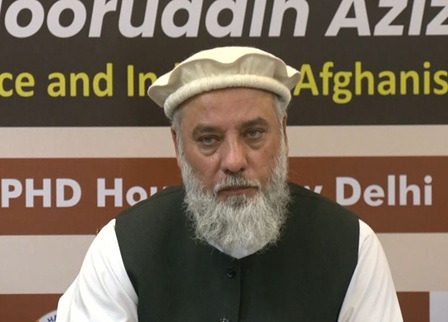
Ehsan Azari Stanizai
Benjamin Gilmour’s feature film Jirga remedies maladies of guilt with bravery
and redemption
Ehsan Azari Stanizai
It is fairly cathartic when a war movie takes us far beyond the horror of bullets, bomb and blood into the other sides of the war—emotional incumbrances on the individuals. With such a characteristic aplomb, Jirga film unveils the depth of the heartache and guilt of an ex- solider whose conscience has been caught up by his own participation in the war. In this, the film moves away from the run-on-the-mill movies about Afghan war overloaded with stereotypical nationalist hubris.
It’s the story of an Australian ex-soldier who kills an unarmed civilian in a thundery blazing raid on a far-flung village in southern Afghanistan and three years later travel to the same village, seeking forgiveness. Sam Smith plays admirably the protagonist, the lone soldier who finds it difficult to deal with moral guilt that the haunting feelings of killing a villager fall on his soul. He demonstrates early in the film the signature of such feelings in his rueful expression when he turns back and look at his victim whose dead body is being dragged home by his wife and a child.
Back in Kabul, he makes friends with a taxi driver, played by Sher Alam Meeskin Ustad, who is occasionally singing while driving him first to a resort in Bamyan in central Afghanistan. He then insistently begs the driver to take him to Kandahar, the Afghan historical city, which was named by Alexander the Great and was one of his favourite Alexandrias in the East. The cabbie vehemently resists the request, but finally Sam’s begging and offering a lot of money soften his heart and agrees to drive him into the most dangerous terrain infested with the Taliban militants.
Cabbies are famous for their gift of the gab. You can charm them by punctuating the conversation with frequent ‘interjections on the order of “it’s a crazy world!”’, the Italian philosopher and semiotician, Umberto Eco writes in a short humorous piece, “How to Use the Taxi Driver.” This is what the hashish smoking cabbie says in his beautiful songs in Pashtu:
Like streams, tears roll past my collar down my neck,
This is a crazy brutal world, there is no one to have mercy on me.
Along the journey, Sam is stopped in a Taliban check post but manages to flee when the Taliban barrage of bullets miss him. The second time, he isn’t so lucky, the Taliban captures him and takes him to their mountain hideout. The Taliban are divided on whether to kill the solider or demand a huge ransom for his release. But the Taliban’s commander leaves the verdict about the fate of the soldier to be decided by the villagers in their Jirga—the traditional assembly, part of the non-written age-old Afghan ethical code of honour, Pashtunwali. After teaching Sam, a statement in Pashtu that he will be using once he is confronted with the villagers: “I killed someone, please forgiveness.” When the soldier reaches the village, the heavily bearded elders convene a Jirga, which unanimously pass a resolution that the only one who is able to forgive or kill the solider is a 10-year-old orphan of the dead villager. When the soldier knocks at the door of his victim, he realizes that the person he had killed was, in fact, the village musician. In a highly emotional scene, while all eyes are on him, the boy pensively gazes at the soldier and then sheath his dagger. “Forgiveness is mightier and honourable than taking revenge,” the jubilant villages burst into shouts. Then the villagers slaughter a ram on behalf of the Australian soldier—a ceremonious symbol of forgiving the enemy—that in a melodramatic twist, brings the film to a close. The orphan also refuses to accept wads of the US dollars the soldier offers as blood money. So finally, forgiveness and compassion win over revenge—a virtue in Afghan tribal culture.
American director, Peter Berg previously brought to the screen, Pawhtunwali in his war movie, Lone Survivor (2013), and combined it with a hyped-up American nationalism. However, Benjamin Gilmour, depicts a bare-bones of the Afghan tradition with its popular jurisdiction. The rich and dense imagery of the rugged beauties of the Afghan mountains, eerie gorges, and the penetrating sound of the Afghan Rubab mingled with Western chillout music at the background shine as the innovative cinematography. The 19th century narrow lane of the bird market in Kabul is shown as untacked by the endless war. The stunning graphic close-ups on the ‘eagle eye’ and ‘beaky’ noses of the Afghan characters were well selected to portray the traditional image of the Afghan other in Western discourse. The Taliban are portrayed with their heavily kohl-lined eyes and shoulder-length hair spilling from their black turbans. This is the lasting thing one may love about the realism of the film. But, such a realism habitually relapses into a raw documentary genre. The Jirga film isn’t an exception.
A good film as French philosopher, Alan Badiou, says brings to view a human experience and a film is essentially an art and ‘imaginary voyage’ for thinking and interpretation. The Jirga, indeed, reveals an individual experience of the war, which gives the audience the key to the interpretation of its subject matter. The Jirga has a clear message to everyone, to the Taliban, the Westerners, and the Afghans: lo and behold, even in the horror of warfare you can’t escape moral accountability.
In his trials and tribulations, the protagonist of the film isn’t alone. The film maker gives his own account, as a story-within-the-story of a profound furtive immorality of the Pakistani authorities. Gilmour and his crew first travel to Pakistan to shoot the film in the tribal area along the Durand Line the imaginary border between Afghanistan and Pakistan and avoid immanent risks to their lives for shooting the film in Afghanistan. He had the help of a sympathetic person in Pakistan who was ready to pay $100,000 for the production of the film. After reading the script of the screenplay, the feared Pakistani military spy agency, the ISI turns down Gilmour’s pleas and forced the financier to pull out of the deal. Gilmour wasn’t lucky like the director of the Kite Runner, another film on Afghanistan, which was allowed to be shot in Kashgar, China. Then the film maker and his crew decide to shoot the film in the most dangerous place on earth, Kandahar at all costs.
Dr Ehsan Azari Stanizai is a lecturer in literary studies at Graduate School, National Institute for Dramatic Arts (NIDA)





